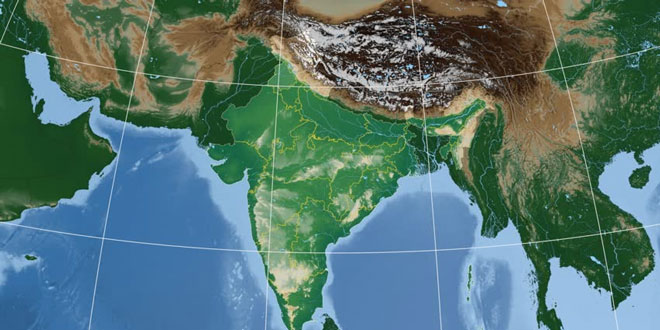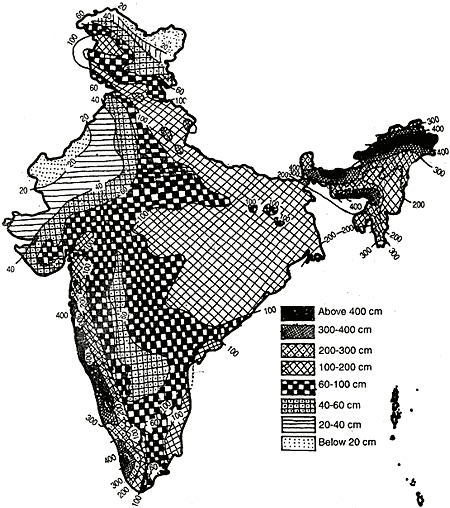Question: How do the Himalayas influence the climate of India?
Answer:The Himalayan ranges do not permit the cold winds, coming from central Asia, to enter India. Thus, the Himalayas from a protective barrier for the cold northern winds and keep India worm.
Question: Describe the monsoon winds.
Answer:
- The annual cycle of season in India is dominated by the monsoon winds from June till end of September.
- Monsoon winds which come from the Indian Ocean, bring a large amount of moisture with them.
- The Indian peninsula divides the south-west monsoon winds into two branches – the Arabian Sea branch and the Bay of Bengal branch. Both the branches met in northern part of India.
- The monsoon winds are generally irregular and unpunctual. These winds can cause floods in one part and droughts in another part at the same time.
Question: Describe the general distribution of rainfall in India.
Answer:
- The distribution of rainfall in India is controlled by physical features and the direction of the rain-bearing winds.
- The average annual rainfall in our country is about 120 cm. This is the highest in the world for a country as big as India.
- Most of the precipitation in our country is in the from of rainfall.
- Parts of Meghalaya receive about 800 cm of annual rainfall, while some areas in south-west Rajsthan receive less than 10 cm of rainfall annually.
- The world’s highest rainfall (about 1,142 cm per year) has been recorded at Mawsynram, near Cherrapunji in Meghalaya.
 Class Notes NCERT Solutions for CBSE Students
Class Notes NCERT Solutions for CBSE Students



